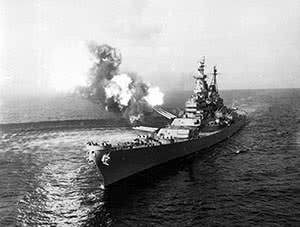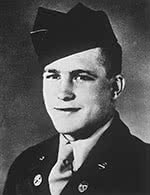Gov. Nixon marks 60th anniversary of Korean War armistice in Washington, Mo.
On July 27, 2013, Gov. Jay Nixon joined Korean War veterans in Washington at a ceremony marking the 60th anniversary of the armistice that ended fighting in the Korean War. More than 50 veterans of the Korean War were honored at the event. After offering remarks, Gov. Nixon placed a wreath at the Korean War Memorial in Krog Park, honoring those who made the ultimate sacrifice in the war. The ceremony was presented by Chapter 324 of the Korean War Veterans Association. Read Gov. Nixon’s remarks.
Op-ed: 60 years later, we must honor our Korean War veterans
By Gov. Jay Nixon
Sixty years ago this month, the fighting ended in a war that, today, many Americans know little about. Thousands of young Missourians who fought bravely on the Korean peninsula to halt unprovoked aggression and to defend freedom came home to farms, small towns and big cities across our diverse state. Yet, returning from halfway around the world, few were greeted with fanfare or hailed as heroes… Read the complete article at governor.mo.gov.
Missouri’s Korean War Award
Missouri Korean War era veterans are eligible for the Korean War Award, awarded by the Missouri National Guard, if they served during the Korean War years. More than 17,000 Korean War Medallions have been awarded to Missouri veterans since the award was created in 2003. For more information and to apply for the Korean War Award, visit moguard.com and complete an application. The surviving spouse or oldest living survivor may also apply on behalf of an eligible veteran.
Honoring Missouri’s Korean War veterans on the 60th anniversary of armistice, July 27, 2013.
Battleship USS Missouri’s instrumental role in Korean War

USS Missouri fires her guns against enemy positions during the Korean War.
The battleship USS Missouri is best known for its role in World War II, which included the Sept. 2, 1945 signing of the Empire of Japan’s unconditional surrender in Tokyo Bay, ending the war. But the Missouri also played a key role in the Korean War. As we mark the 60th anniversary of the armistice that ended the Korean War on July 27, 1953, here’s a brief look at the Missouri’s support of U.S. forces off the coast of Korea during America’s “Forgotten War.”
The USS Missouri was ordered to Korea at top speed in June 1950, battling typhoon winds in order to offer aid and support to U.N. troops on the southeastern shore of South Korea in June 1950. Soon after, the Missouri traveled farther north to aid U.N. troops behind enemy lines at Inchon. When the North Koreans retreated, the Missouri led a task force that landed at Wonson, North Korea.
As U.N. troops pushed into North Korea, China entered the conflict, forcing U.N. forces to pull back. The USS Missouri’s 16-inch guns were able to provide enough support to the U.S. Marines to cover their sea evacuation from the Chosin Reservoir.
In late March 1952, the Missouri was relieved of its duties in the Korean Combat Zone. In October 1952, the Missouri returned to North Korea to carry out naval raids bombarding factories, transportation lines and communications facilities. The USS Missouri left Korea for the last time on March 25, 1953.
During the Missouri’s two deployments in Korea, the ship fired a total of 3,000 tons of projectiles. (Source: Missouri State Museum USS Missouri exhibit.)
USS Missouri Today
On March 31, 1992 the USS Missouri was decommissioned for the final time, and on Jan. 29, 1999 the ship was stationed as a centerpiece of the Battleship Missouri Memorial in Pearl Harbor.
Currently, the USS Missouri serves as an exhibit at the memorial, offering historical displays original to the ship and its service. For more information about the USS Missouri and the Battleship Missouri Memorial, visit ussmissouri.com.
Medal of Honor Recipients
Three Missourians received the Medal of Honor for their service in the Korean War. The Medal of Honor is the United States’ highest military honor, awarded for acts of valor above and beyond the call of duty. The medal is awarded by the President in the name of Congress to U.S. military personnel only. All three Missourians received the award posthumously.
Richard G. Wilson

- Rank and organization: Private First Class, U.S. Army, Co. 1, Medical Company, 187th Airborne Infantry Regiment.
- Place and date: Opari, Korea, 21 October 1950.
- Entered service at: Cape Girardeau, Mo.
- G.O. No.: 64, 2 August 1951.
Citation: Pfc. Wilson distinguished himself by conspicuous gallantry and intrepidity above and beyond the call of duty in action. As medical aid man attached to Company I, he accompanied the unit during a reconnaissance in force through the hilly country near Opari. The main body of the company was passing through a narrow valley flanked on 3 sides by high hills when the enemy laid down a barrage of mortar, automatic-weapons and small-arms fire. The company suffered a large number of casualties from the intense hostile fire while fighting its way out of the ambush. Pfc. Wilson proceeded at once to move among the wounded and administered aid to them oblivious of the danger to himself, constantly exposing himself to hostile fire. The company commander ordered a withdrawal as the enemy threatened to encircle and isolate the company. As his unit withdrew Private Wilson assisted wounded men to safety and assured himself that none were left behind. After the company had pulled back he learned that a comrade previously thought dead had been seen to be moving and attempting to crawl to safety. Despite the protests of his comrades, unarmed and facing a merciless enemy, Pfc. Wilson returned to the dangerous position in search of his comrade. Two days later a patrol found him lying beside the man he returned to aid. He had been shot several times while trying to shield and administer aid to the wounded man. Pfc. Wilson’s superb personal bravery, consummate courage and willing self-sacrifice for his comrades reflect untold glory upon himself and uphold the esteemed traditions of the military service.
Billie G. Kanell
- Rank and organization: Private, U.S. Army, Company I, 35th Infantry Regiment, 25th Infantry Division.
- Place and date: Near Pyongyang, Korea, 7 September 1951.
- Entered service at: Poplar Bluff, Mo.
- G.O. No.: 57, 13 June 1952.
Citation: Pvt. Kanell, a member of Company I, distinguished himself by conspicuous gallantry and outstanding courage above and beyond the call of duty in action against the enemy. A numerically superior hostile force had launched a fanatical assault against friendly positions, supported by mortar and artillery fire, when Pvt. Kanell stood in his emplacement exposed to enemy observation and action and delivered accurate fire into the ranks of the assailants. An enemy grenade was hurled into his emplacement and Pvt. Kanell threw himself upon the grenade, absorbing the blast with his body to protect 2 of his comrades from serious injury and possible death. A few seconds later another grenade was thrown into the emplacement and, although seriously wounded by the first missile, he summoned his waning strength to roll toward the second grenade and used his body as a shield to again protect his comrades. He was mortally wounded as a result of his heroic actions. His indomitable courage, sustained fortitude against overwhelming odds, and gallant self-sacrifice reflect the highest credit upon himself, the infantry, and the U.S. Army.
Charles R. Long
- Rank and organization: Sergeant, U.S. Army, Company M, 38th Infantry Regiment, 2d Infantry Division.
- Place and date: Near Hoengsong, Korea, 12 February 1951.
- Entered service at: Kansas City, Mo.
- G.O. No.: 18, 1 February 1952.
Citation: Sgt. Long, a member of Company M, distinguished himself by conspicuous gallantry and intrepidity above and beyond the call of duty in action against an armed enemy of the United Nations. When Company M, in a defensive perimeter on Hill 300, was viciously attacked by a numerically superior hostile force at approximately 0300 hours and ordered to withdraw, Sgt. Long, a forward observer for the mortar platoon, voluntarily remained at his post to provide cover by directing mortar fire on the enemy. Maintaining radio contact with his platoon, Sgt. Long coolly directed accurate mortar fire on the advancing foe. He continued firing his carbine and throwing hand-grenades until his position was surrounded and he was mortally wounded. Sgt. Long’s inspirational, valorous action halted the onslaught, exacted a heavy toll of enemy casualties, and enabled his company to withdraw, reorganize, counterattack, and regain the hill strongpoint. His unflinching courage and noble self-sacrifice reflect the highest credit on himself and are in keeping with the honored traditions of the military service.
Source: U.S. Army

